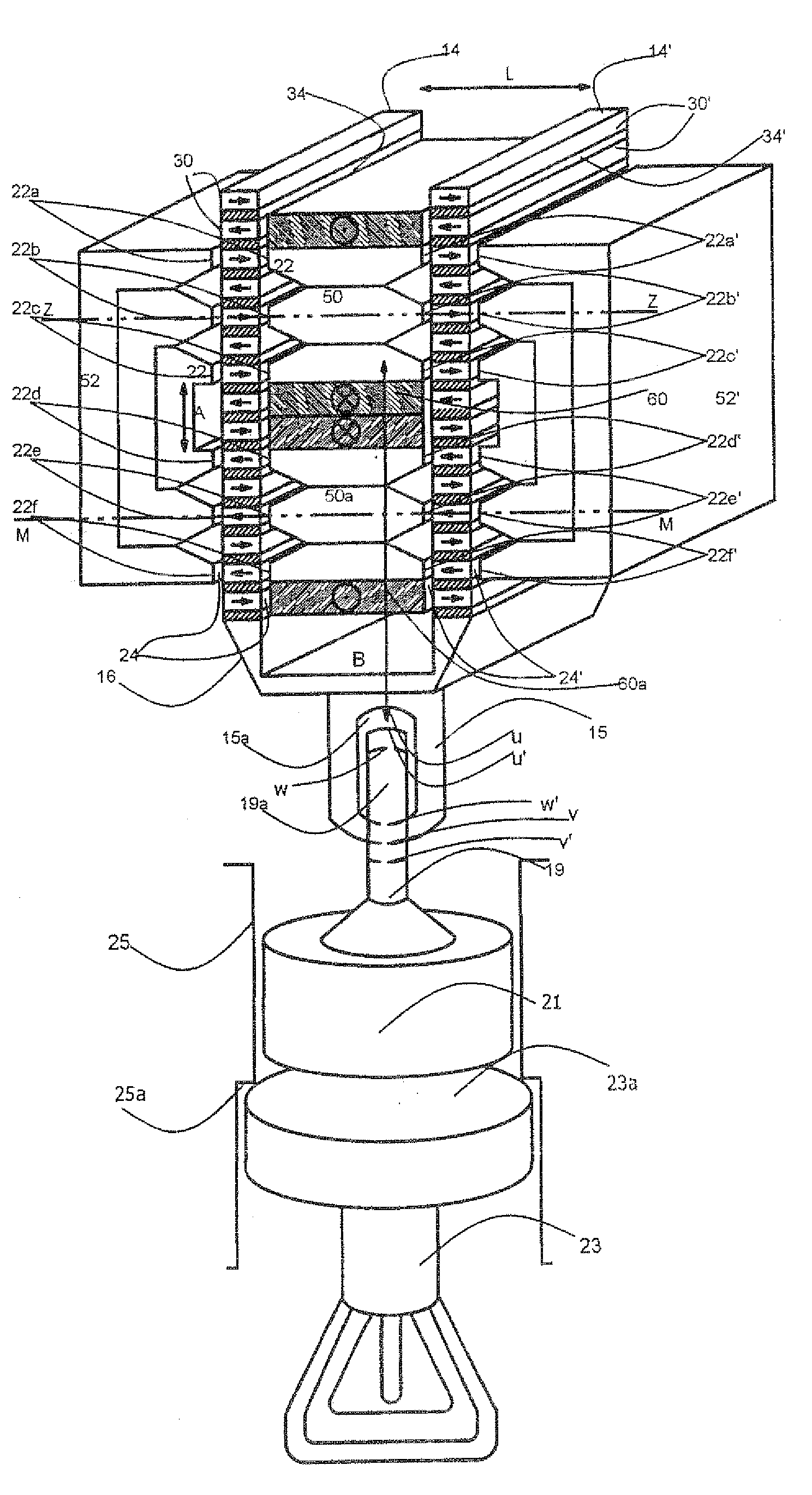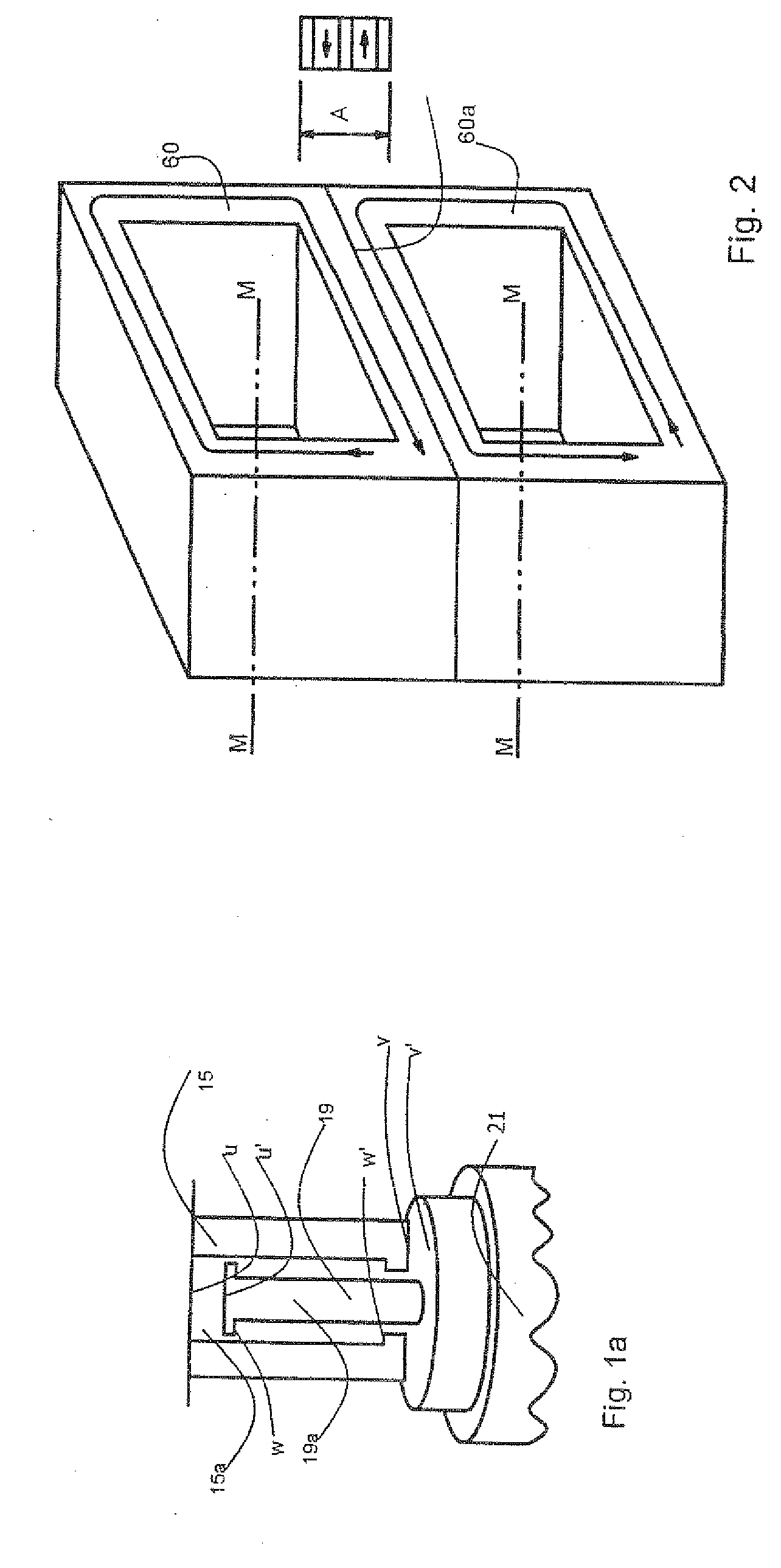Linear Actuator in an Electric Percussion Tool
a technology of electric percussion and actuator, which is applied in the direction of portable percussive tools, electrical apparatus, dynamo-electric machines, etc., can solve the problems of low inert mass of the rotor and high stability
- Summary
- Abstract
- Description
- Claims
- Application Information
AI Technical Summary
Benefits of technology
Problems solved by technology
Method used
Image
Examples
Embodiment Construction
[0052]FIG. 1 illustrates a first form of embodiment of an electric linear actuator 10 in an electric percussion tool, which actuator has a rotor 16 and a stator 18. Those skilled in the art understand that the term “rotor” is used broadly to identify a moving element even though the motion is translational and or rotational. In the following description the rotor 16 translates and reciprocates along its axis.
[0053]The rotor 16 has two parallel stacks 14, 14′ which are arranged at a distance L from one another and consist of a large number of superposed permanently magnetic bars 30, 30′ having an essentially parallelepipedal design.
[0054]The stator 18 is in the form of a soft-magnetic shaped body made of sintered ferrous metal powder or of stratified iron laminations. The stator 18 has a number of pairs of teeth 22a, 22a′; 22b, 22b′; 22c, 22c′; 22d, 22d′; 22e, 22e′; 22f, 22f′ having mutually opposed teeth 22. One of the two stacks 14, 14′ is received, in each case, between the teeth ...
PUM
 Login to View More
Login to View More Abstract
Description
Claims
Application Information
 Login to View More
Login to View More - R&D
- Intellectual Property
- Life Sciences
- Materials
- Tech Scout
- Unparalleled Data Quality
- Higher Quality Content
- 60% Fewer Hallucinations
Browse by: Latest US Patents, China's latest patents, Technical Efficacy Thesaurus, Application Domain, Technology Topic, Popular Technical Reports.
© 2025 PatSnap. All rights reserved.Legal|Privacy policy|Modern Slavery Act Transparency Statement|Sitemap|About US| Contact US: help@patsnap.com



